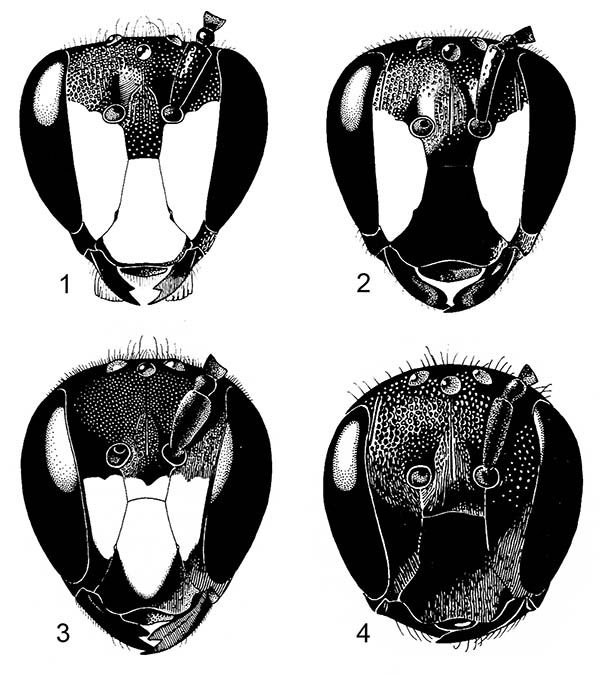Notes on male and female facial patterns in bees (Hymenoptera: Apoidea), with comments on other aculeates
DOI:
https://doi.org/10.17161/jom.v0i26.4600Keywords:
Apoidea, AnthophilaAbstract
Pallid (frequently yellow) integumental areas characterize faces of many bees and related wasps. Some species lack such markings, others lack them only in females, while others have them in both sexes. A rule applicable to thousands of species is that, if present, yellow areas are more extensive in males than in females. In different groups, yellow areas can be either expanded or reduced, both have occurred repeatedly in the Aculeata. In some groups that lack integumental yellow facial areas, males have brushes of yellow or brassy facial hairs that hide the integument. Behavior associated with presence or abscence of facial yellow areas is not recognized, for mating males usually approach females from above and behind so that neither can see the face of the other. Possibly male-to-male interactions are involved.References
Houston, T.F. 1975. A revision of the Australian hylaeine bees (Hymenoptera: Colletidae): I. Introductory material and the genera Heterapoides Sandhouse, Gephyrohylaeus Michener, Hyleoides Smith, Pharohylaeus Michener, Hemirhiza Michener, Amphylaeus Michener and Meroglossa Smith. Australian Journal of Zoology, Supplementary Series 23 36: 1–135.
Houston, T.F. 1981. A revision of the Australian hylaeine bees (Hymenoptera: Colletidae): II. Genus Hylaeus Fabricius. Australian Journal of Zoology, Supplementary Series 29 80: 1–128.
Sheehan, M.J., & E.A. Tibbetts. 2011. Specialized face learning associated with individual recognition in paper wasps. Science 331(6060): 1272–1275.
Tibbetts, E.A. 2002. Visual signals of individual identity in the wasp Polistes fuscatus. Proceedings of the Royal Society, Series B, Biological Sciences 269(1499): 1423–1428.
Additional Files
Published
Issue
Section
License
Copyright for articles published in Journal of Melittology is retained by the authors, with first publication rights granted to the journal. By virtue of their appearance in this open access journal, articles are free to use, with proper attribution and permission of the authors, in educational and other non-commercial settings.





